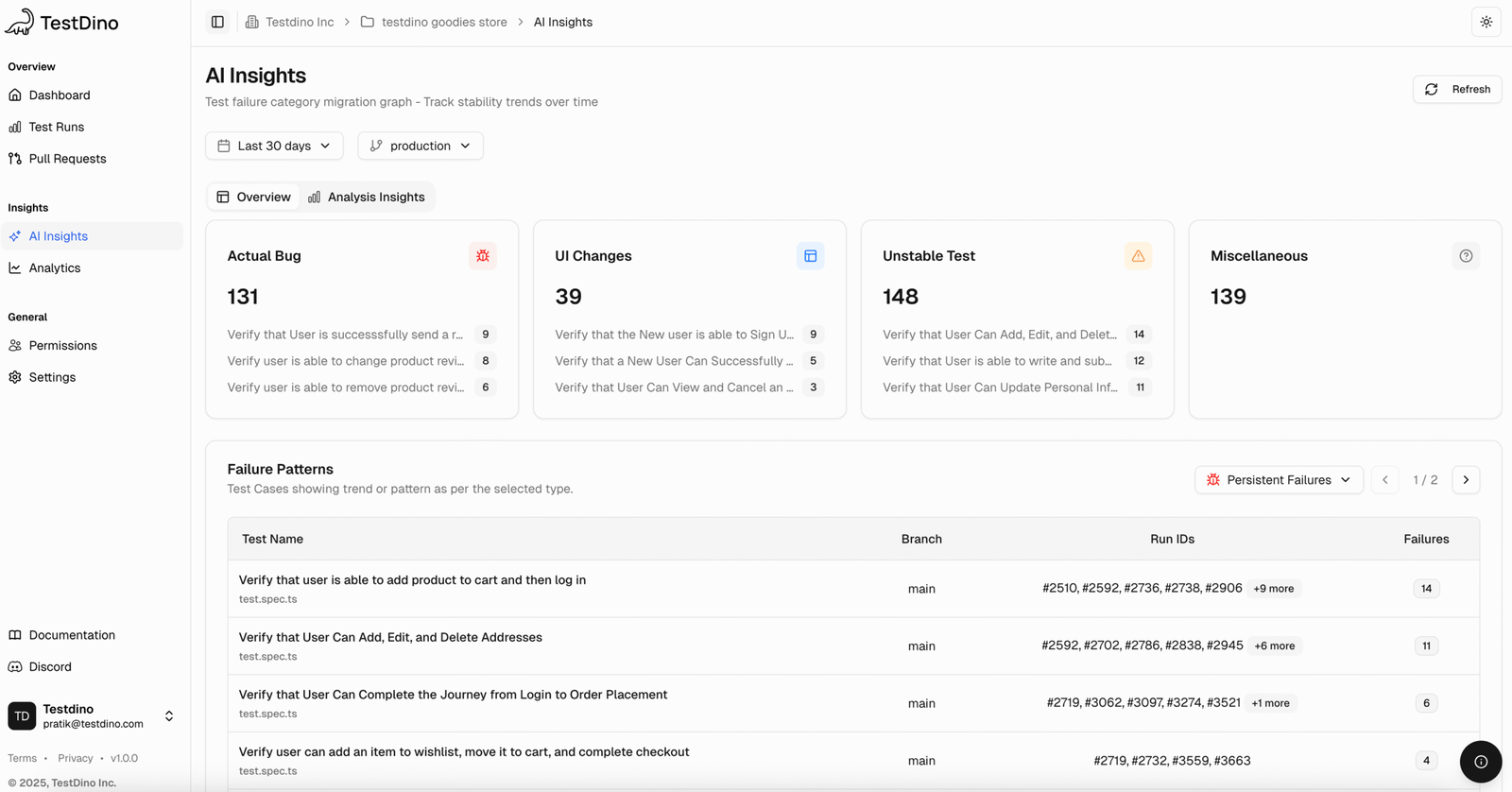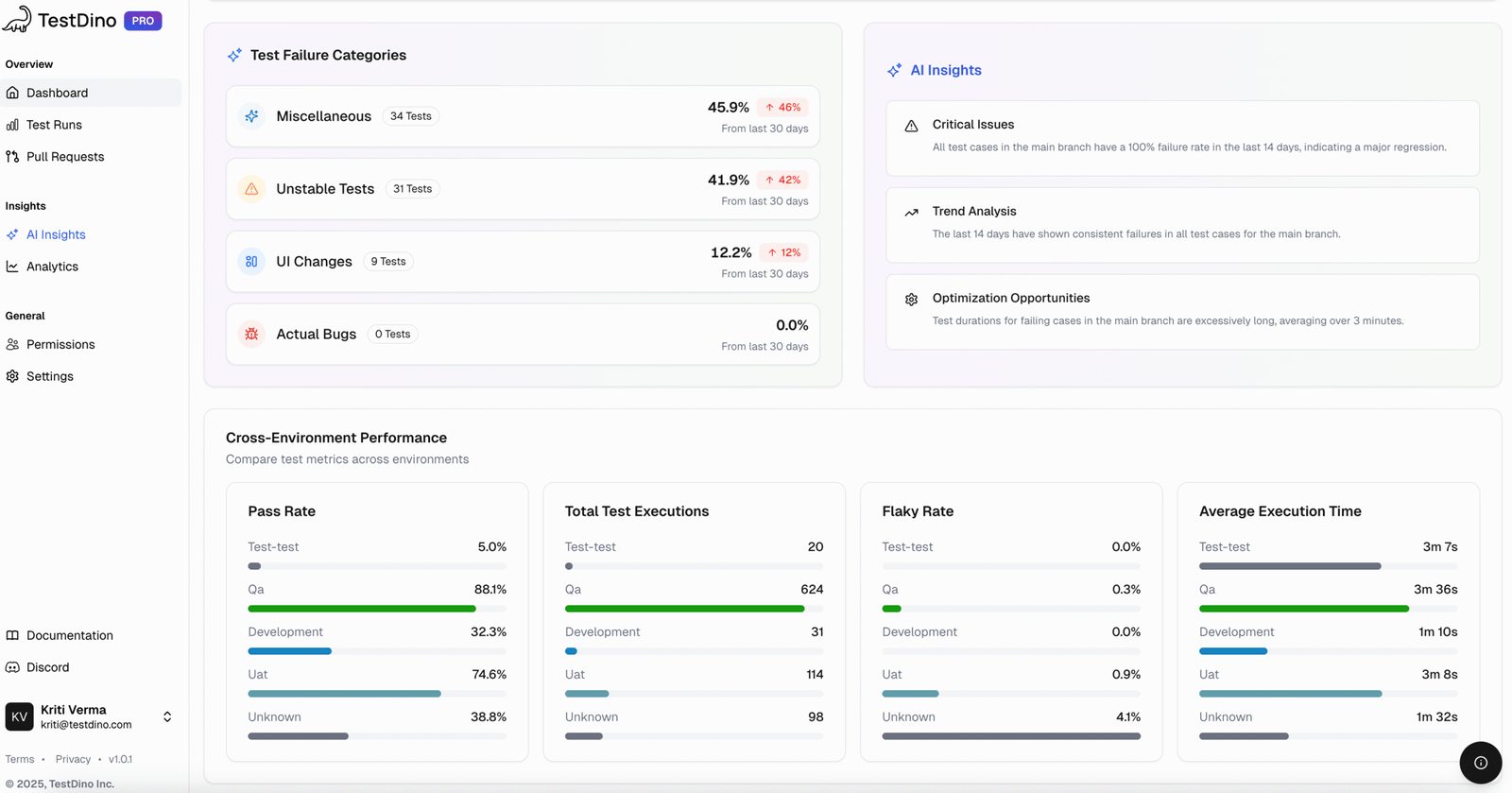You run thousands of automated tests a day. The problem is not running them, it is assessing their test results. If you cannot assess the test failures on time, releases slip, and costs escalate.
This guide outlines the essential features of a modern test reporting tool. Real-time results in your PRs, AI that explains failures, role-specific views, and analytics that drive decisions.
If you lead QA, manage multiple test suites, or just want to ship faster, this guide is for you.






